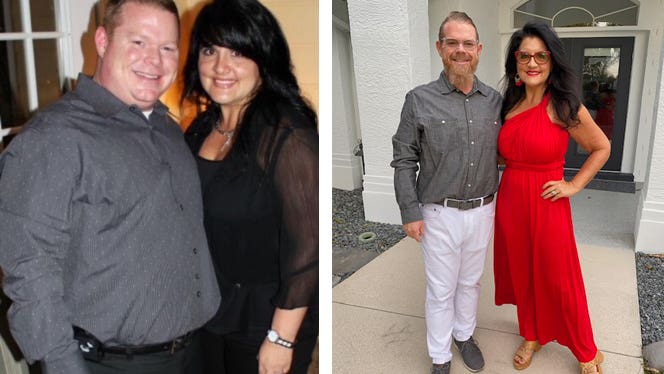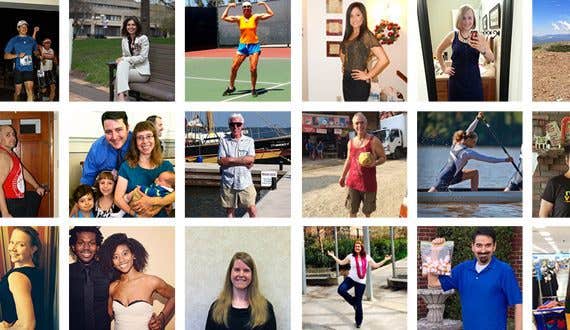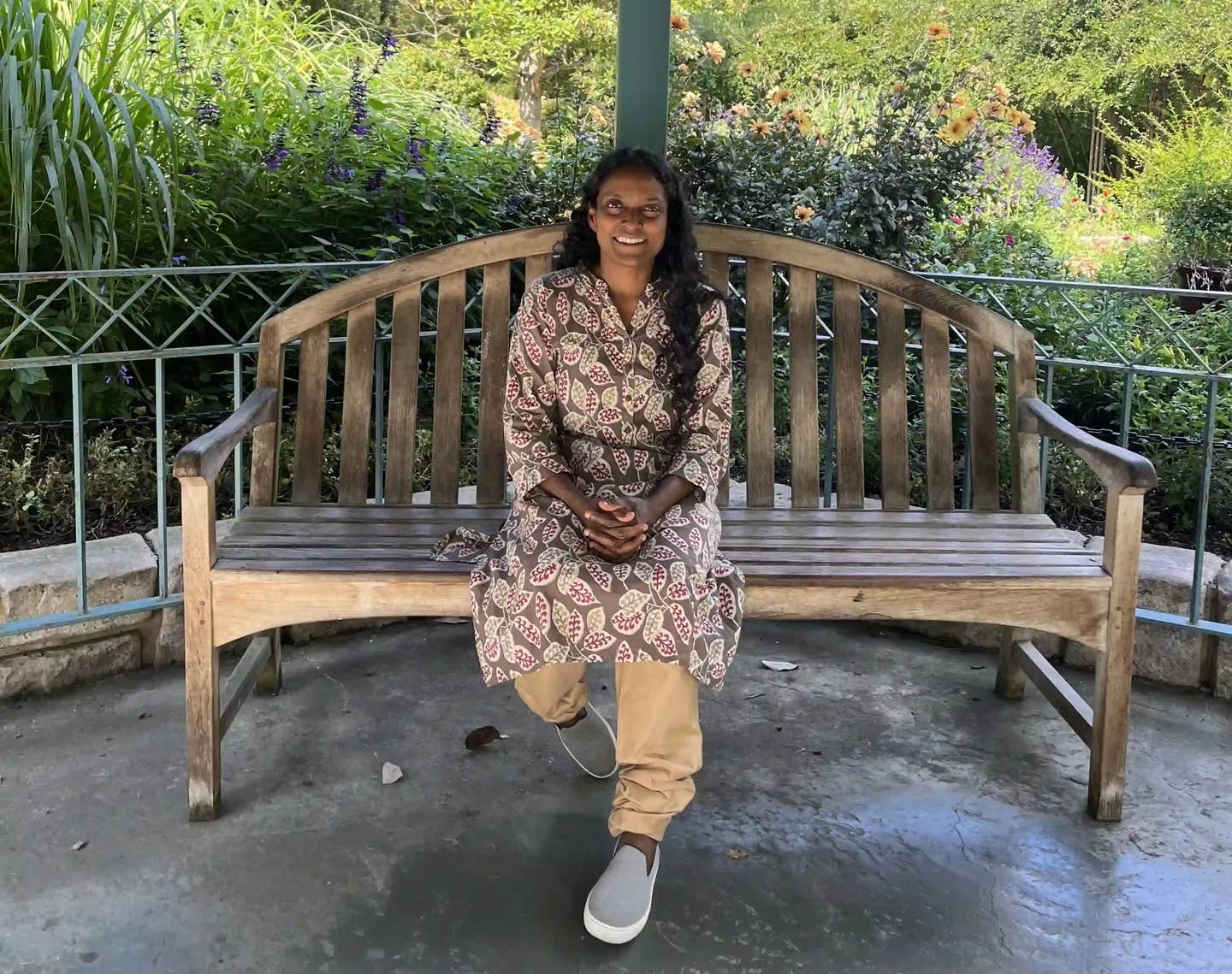
1 Year into a Plant-Based Diet, We’ve Reversed Chronic Diseases and Shed a Combined 130+ Pounds
By Ana Maria Leis,
My husband, Jay, and I used to eat loads of animal products—all kinds of meat, including organ meats. We loved beef, especially a good cast-iron-seared ribeye. You name it, we ate it.
About 20 years ago, Jay was diagnosed with Type 2 diabetes, as well as high blood pressure and high cholesterol. We were told that there was no way to reverse Type 2 diabetes; that it was in Jay’s genetics, that he would always need medication, and that he could only hope to slow the progression of the disease. We were told that carbohydrates and sugars were bad for people with diabetes, so we tried to limit our intakes of those.
Over the years, we picked up extra pounds, and we tried a lot of different diets to shed them. We had some success—I lost 50 pounds on WeightWatchers—but the weight always crept back up, and it was torture to maintain, because we kept thinking about food all the time.
Reaching Rock Bottom
About five years ago, my A1C started rising into the borderline diabetic range, then into the diabetic range. My doctors told me I should follow a low-carb, sugar-free diet centered on lean animal protein. Jay’s doctors recommended the same for him—they said that it would help him lose weight, improve his A1C, and get off medications.
We committed to dieting. Jay lost around 35 pounds and I lost 20. Yet neither of us saw significant improvements in our lab numbers. On top of this, I started going into perimenopause and menopause. I had so many ailments—inflammation, joint pain, acid reflux, acne, hot flashes, sleeplessness, etc. I was nearly ready to give up. I figured I was just getting old, and that this is how life would be.
In 2022, Hurricane Ian hit our town in Florida, causing massive damage to our home. We began the long process of rebuilding, which would take almost two years. Over that time, we became severely depressed, and our health reached a low point.
Discovering Whole-Food, Plant-Based Nutrition
In October 2023, at rock bottom, I desperately reached out to my sister, Maria Cecilia Mosquera, M.D., a physician board-certified by the American College of Lifestyle Medicine, specializing in obesity medicine, culinary coaching, public health, and preventive medicine. She told us about the whole-food, plant-based (WFPB) lifestyle. She was the first doctor to tell us that we could reverse Type 2 diabetes, high cholesterol, and high blood pressure. Prior to this, we didn’t realize reversal was an option.
At my sister’s recommendation, we watched the documentaries Forks Over Knives and What the Health. We were game to try anything at that point. So we began our WFPB journey, with her guidance.
She helped us understand that fatty foods, not complex carbohydrate–rich ones, contribute to insulin resistance, and she educated us on which foods are truly healthy. She taught us how to decipher food labels—i.e., to look at the nutrition facts and the ingredient lists, and pay no mind to marketing claims. We discovered that unhealthy ingredients turned up in unexpected places—for example, some brands of dried fruits contain added sugar, oil, and salt. I was shocked!
We wiped all the standard American diet (SAD) foods from our pantry, fridge, and freezer. We didn’t want any of these foods left in our house, because we didn’t want to end up leaning on them as a crutch.
I’ve always been a foodie and amateur chef, yet learning how to cook WFPB took some time. We learned that vegan isn’t the same as whole-food, plant-based—that vegan foods can be highly processed, like store-bought plant-based cheeses. We quickly found that the best approach was to cook to flavor profiles that we loved, such as Mexican, Indian, and Chinese cuisines. And I discovered that family recipes could be prepared WFPB. That was eye-opening!
My sister taught us how to balance our meals nutritionally: Fill a quarter of the plate with beans and legumes, a quarter of the plate with grains and starchy vegetables, and the rest of the plate with nonstarchy vegetables, such as leafy greens.
It took us about four weeks to get up to speed. But once we did, we found the WFPB lifestyle to be a breeze—less expensive, less work, and much more satiating than a standard American diet. Our goal was not to lose weight but to improve our health. We focused on nutrition. “Food as medicine” became our motto. We thought of this not as a diet but a lifestyle. We’d found freedom!
Within a month of eating WFPB, my acne, migraines, acid reflux, joint pain, stomach issues, hot flashes, and insomnia all went away. Jay and I found that we had more energy, and we gradually started losing weight even though we weren’t really trying.
First WFPB Anniversary: Happier Than Ever
October 16 marked one year of eating WFPB. We both feel so much better, inside and out. Our A1Cs are in the healthy range, as is Jay’s blood pressure and cholesterol. I remain free from aches, pains, and other symptoms. We’re able to exercise regularly. I’ve lost 57 pounds and Jay has lost 81—without counting calories or restricting portions. We look and feel better than we did in our twenties. We’ll never go back to our old ways.
Now we actually crave WFPB foods, as we have created recipes that appeal to our taste buds. I keep treats and meals in the freezer and fridge at all times, like green power muffins, which feature spinach and kale. I make my own soy yogurt and use it in everything, including chia pudding and tzatziki sauce. I love recipes that come together quickly, so for our everyday meals, I try to create dishes that are easy but taste gourmet, like Mediterranean pizzas topped with hummus, spinach, artichokes, tomatoes, mushrooms, caramelized shallots, roasted garlic, minced kale, and olives. We knew we had become true WFPB foodies when we went on a cruise and all we could think about was getting home to make our own WFPB pizzas!
Another go-to is our “veggie power bowls.” The bowls are as big as our heads, and Jay and I compete to see which of us can put the largest number of nutritious ingredients in. Jay currently holds the record, at 22! For a hot Florida summer day, we love smoothies made with fruits and veggies and, for satiating power, oatmeal and/or flax.
Family and friends have been so supportive of our lifestyle, having witnessed what a positive impact it’s made in our health. In fact, many of them have asked us how to make these changes themselves, so we started a free Facebook group where we share our healthy journey, knowledge, and experiences.
We recently celebrated 32 years of marriage, and we both agreed that being healthy is the best present we could have given to ourselves and our relationship. We are forever thankful to my sister for introducing us to this lifestyle. If you’re struggling as we once were, I hope this story inspires you to change your lifestyle, get back your energy, reverse your diseases, and feel young again.
Ready to get started? Check out Forks Meal Planner, FOK’s easy weekly meal-planning tool to keep you on a healthy plant-based path. To learn more about a whole-food, plant-based diet, visit our Plant-Based Primer.
Has a whole-food, plant-based diet impacted your life?
We would love to hear about it!
SHARE YOUR STORY
Join our mailing list
Get free recipes and the latest info on living a happy, healthy plant-based lifestyle.
By providing your email address, you consent to receive newsletter emails from Forks Over Knives. We value your privacy and will keep your email address safe. You may unsubscribe from our emails at any time.
